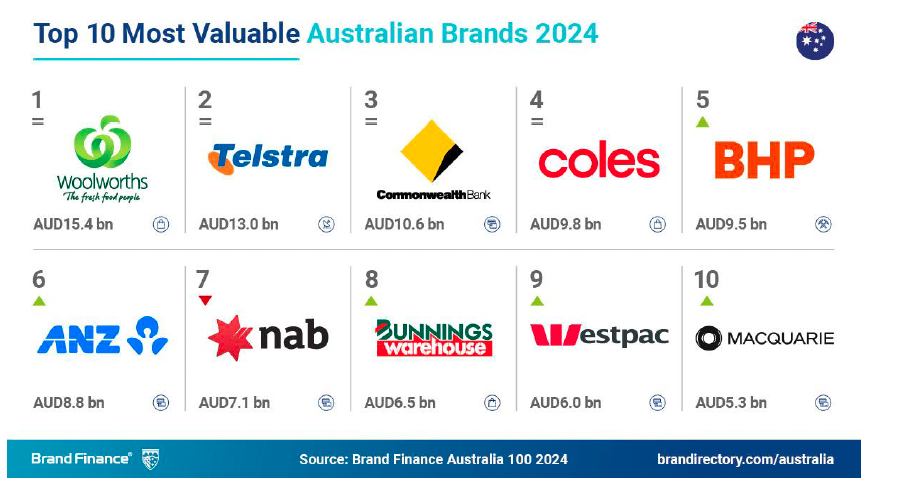Hiring up, pay packets fatter, commercial growth marketers in hot demand as corporate sentiment turns – Perceptor jobs and salary review shows market gaps opening up

What you need to know:
- Perceptor has published its 20252026 Market Trends & Salary Review, indicating an end to the cyclical downturn and regressive market attitudes that have led to mass redundancies and sluggish job opportunities in the last 3 years, and a return to hiring.
- It’s predicting modest salary increases of 3-4 per cent across executive ranks and categories, with marketers as much in line to receive the pay packet lifts as other functional leaders.
- For CMOs, the biggest emphasis – and bonus opportunity – is delivering commercial growth, followed by team capability building and leadership contribution.
- For those reporting into marketing chiefs down to midlevel, working to deliver against specific outcomes, as well as finding more productivity and effectiveness/efficiency gains from martech, digital and other investments is most in demand.
- Brand hasn’t been forgotten about either; there is breadth to the types of marketers companies are looking to hire and as sentiment improves, conservatism when it comes to category experience also reduces.
- While global reports on job losses due to AI are increasing, Perceptor hasn’t yet found substantial changes to role remits or the volume of hires in the Australian market as yet. Founder and MD, Mark O’Connor, puts this down to companies still working out how AI is going to transform their organisations – large or small.
- But he agrees every company and sector is different and this could change quickly. Per O’Connor: “I could get 10 CEOs in a room, and I guarantee I’d get 10 different views on the impact of AI.”
Marketing is neither being left behind nor being undercut as salary and bonus earnings across corporate job functions get a lift, according to the latest Perceptor Salary Survey. The other good news? Green shoots indicating the jobs market started turning a corner earlier this year are materialising into definite branches of improvement – even with ever-looming AI adoption threatening jobs globally.
More than two years after regression reared its ugly head and redundancies and cost-cutting became the dominant line of defence across categories and companies, Perceptor’s 2025-2026 Market Trends & Salary Review shows we’re back on an upwards curve in corporate hiring.
Generally speaking, companies are beginning to greenlight new roles or at least proceed with replacement hires as signs of market improvement emerge, says Perceptor founder and MD, Mark O’Connor. It’s a trend that has the recruitment firm forecasting corporate base salary increases of between 3 and 4 per cent in the near term, including across marketing teams.
“The sentiment is definitely improving and activity is definitely improving – we are having a good, stronger end to the financial year than I expected in terms of hiring, and I don’t think we’re the exception in the headhunting world with that,” he tells Mi3. “We’re seeing the market gaining momentum.”
For O’ Connor, it signals the end of a five-year cyclical recruitment market – albeit one with an extra dose of volatility thanks to the Covid-19 pandemic.
And it’s turning despite the US Presidential campaign and President Trump’s initial 100 days – and tariff threats – noticeably influencing corporate sentiment in Australia. Our strong federal government majority is playing a counter role to this, which Perceptor believes provides stability, enabling businesses to plan with greater certainty and mitigate concerns related to US policy developments.
“I’m in the optimist camp; I’m investing in my business. We’re getting ready for a good three or four years ahead of us,” says O’Connor. “It’s not like 2022 when I was saying to my team, okay, we’ve got to batten down the hatches, because it’s going to be a tough two years ahead of us. I’m definitely in a positive frame of mind… There’s going to be more change, more jobs out there, and more hiring.”
Another welcome sign for Perceptor: Almost all companies have either paid full or near-full bonuses to team members who have met their objectives. “This confirms the sentiment that despite challenges, companies are achieving their results,” the new report states.
The common theme underneath the CMO is around optimising the martech these businesses have invested in, and driving efficiencies and what I call ‘getting the marketing engine humming’ with some really tangible outcomes.
Salary expectations
Across corporates, the Perceptor 2025-2026 Market Trends & Salary Review predicts staff will start receiving base salary increases of 3 – 3.5 per cent, with the odd exception of 4 per cent as several companies address below-market rewards. One noted difference is more tailored approaches to salary increases, as opposed to the top-down salary mandates of old.
For senior marketers, growth is definitely back in the frame. While there is sector and company size variances, bonus-inspiring incentives for CMOs are being oriented around commercial growth first and foremost.
“As a CMO, that could literally be customer acquisition, or it could be top-line revenue growth. It could also be around some brand KPIs, if it’s FMCG. But the top-line theme is commercial growth,” says O’Connor. This is followed by building the capability of the function, and overall leadership team contribution.
At a top level, senior executives are commanding at least $300,000+ per annum. According to Perceptor, these were the jobs most affected by the slowdown in corporate hiring over the last two years, with many opting to retain existing executive leadership over making drastic changes. However, with shareholders demanding results, this is creating a clear appetite for change, new CEO appointments are translating into changes for direct reports and new leadership team structures.
Certainly, CMO moves are indicating the candidate appetite is ramping up too, with IAG’s chief customer and marketing officer, Michelle Klein’s decision to take the new-look chief growth and marketing officer role at Westpac just one example from the past week.
What should also be welcome news is senior marketing executives are holding their own as salaries across companies inch up.
“The thing to know is that they’re [senior marketers and CMOs] are definitely holding their own against other functions,” continues O’ Connor. “It’s not as if the finance department are getting bigger pay increases or the tech department is. Marketing is not getting undercut for other departments.”
In the middle, executive salaries are sitting between $200,000 – $300,000. While more active than the most senior ranks, it has nevertheless been a subdued slice of the corporate pyramid. In the marketing and digital space, hiring has had a particular skew towards maximising the efficiency of martech investments and driving optimal use of data and insights.
“The common theme underneath the CMO is around optimising the martech these businesses have invested in, and driving efficiencies and what I call ‘getting the marketing engine humming’ with some really tangible outcomes,” says O’Connor. “CMOs have spent the last five years convincing the business to invest in all this martech. They’ve done it, and now the business is saying, so where’s the return on our investment? Where is the increase in your productivity? Now they’re really having to sweat the assets, so to speak.”
Mid-market salaries in Perceptor’s pyramid sit between $100,000 – $200,000. Perceptor again points to businesses making key appointments in mid-level roles to drive specific outcomes.
Brand hasn’t entirely been forgotten about either. “The smart CEOs are beginning to realise they have to invest in brand, but it’s taken a long time,” O’Connor says. “It’s definitely starting to shift back. There’s an understanding that you can’t have one without the other, so that is definitely starting.”
As more companies embrace risk in order to pursue growth, they’re also less conservative and more willing to hire from a different sector. “Which makes my job more interesting,” O’Connor adds.
Market-specific salaries
Specifically, Perceptor pegs the salary for chief customer officers at ASX-listed and large companies at $460,000, plus short-term and long-term incentives. That’s at least $100,000 more than executive-level customer chiefs in mid-size or high-growth companies. The role is also tracking higher than chief digital officers ($310,000 – $410,000 plus incentives depending on organisation).
Chief marketing officer salaries are sitting at $410,000 across most sectors for ASX-listed and large companies, or around $360,000 in mid-size or growing organisations, again with a mix of short-term incentives ranging between 10 – 40 per cent.
At the next level down, head of marketing roles are garnering $285,000 – $325,000 salary packages at the larger end of town, or about $50,000 less in mid-sized or high-growth companies. That’s generally more than heads of customer experience ($225,000 – $255,000), heads of ecommerce ($225,000 – $255,000) or head of CRM ($185,000 – $235,000).
Perceptor notes while the domains of marketing, sales, digital, technology and general management differ, the core leadership challenges remain strikingly consistent.
“They typically centre on building capability across people, processes, and technology, while navigating uncertainty and ambiguity – all with a clear mandate for growth or the turnaround of underperforming functions,” the report states. “These are the themes shaping organisational priorities today and, consequently, the issues candidates must be prepared to address in interviews.”
Sector specifics
Across categories, improving sentiment towards hiring is most apparent in financial services, a sector O’Connor says has always been the first to react to a downturn or sluggish market forces, then is usually the first to recover. After a lacklustre 23/24 – the one exception being insurance – leaner and fitter businesses are likely to accelerate efforts to grow market share, Perceptor says. It also noted salaries in this sector have been in line with or better than inflation, with 4 per cent increases in base salaries and bonuses on target.
“In-demand skillsets will include those related to digital transformation, driving demand for marketers with expertise in digital marketing, data analytics, and emerging technologies such as AI,” the report states. “Organisations with refocused customer-centric strategies will continue prioritising customer experience initiatives, requiring marketers to leverage data-driven insights to deliver personalised and seamless customer journeys. Content will remain invaluable.”
The FMCG and consumer goods space, a more resilient sector overall in recent years, remains strong, and travel and tourism and health are also on the up. Even retail, professional services and technology, arguably among the hardest hit sectors – especially tech in terms of headcount reduction – are indicating a return to hiring, not firing.

I could get 10 CEOs in a room, and I guarantee I'd get 10 different views on the impact of AI.
AI’s looming shadow
Perceptor’s predictions come despite the growing storm clouds indicating mass job losses from AI are on their way. Among global companies reportedly cutting jobs off the back of rapid AI take-up and automation are Microsoft, Intel, Amazon, Meta, and IBM. Against this, Australia’s current unemployment rate is holding steady at 4.1 per cent, although there are indications lower-end jobs are starting to be affected, with the jobless rate for young people rising slightly to 9.2 per cent.
According to Perceptor, while transformation is once again becoming the order of the day thanks to AI, this hasn’t yet translated into AI-specific roles and remits in the main. Against this, however, O’Connor acknowledges high-profile AI and data analytics hires in recent weeks across Westpac and National Australia Bank could signal some of what’s to come. In its report, Perceptor highlights notable advancements locally including Telstra’s $700m joint venture investment with Accenture in AI technology, and Commonwealth Bank’s rise to the top 5 banks globally for AI adoption.
“I think everyone is looking at AI and they’re trying to figure out what it means for their organisation. And, of course, the marketers are trying to figure out what it means for their function,” O’ Connor comments. “The key thing we should be encouraging people to do is understand that AI isn’t just going to affect marketing. It’s going to affect every single function. It’s not as if marketing is going to be affected in isolation.
“I think we’re at the early days in organisations where, yes, they’re all starting to use AI, but they’re not yet at the point in Australia at least, where they’re significantly changing roles and structures. But I suspect it might come quite quickly in some sectors.”
There’s also very diverse views right now on how quickly or substantial AI will change things across CEOs. “I was talking to a very senior exec yesterday in one of the telcos and they were saying they think it’s probably not going to be that dissimilar to digital when it started becoming a key part of organisation – it’s in small increments, and it’s going to create new types of jobs. Yes, it’s going to change things, but this particular executive doesn’t think it’s going to destroy the massive swathes of jobs some of the headlines have set,” O’Connor comments.
“Now that may or may not be true… But the reality is nobody knows. I could get 10 CEOs in a room, and I guarantee I’d get 10 different views on the impact of AI.”
For his part, O’Connor is betting on entry, lower-end repetitive jobs being impacted first. Take white-collar jobs in call centres or low-end data analytics. “To be honest, these have largely already been outsourced to India and the Philippines.”
The advice for marketers
Off the back of Perceptor’s findings, and what he’s witnessed in terms of hiring practices of late, O’Connor says marketers looking for a new role can be optimistic things are improving. But what they need to be really clear on is what they can bring to a role when they’re applying for it.
“What is your value proposition? And stop using AI to write your CV, because every CV now reads exactly the same,” he warns. Plus, “you need to be ‘doing’. There are three channels to market: One is talking to me and my peers. Two is applying direct to companies… three, and the most powerful, is activating the network of people you know. It’s not about going on LinkedIn saying, hey, I’m looking for a job. It’s about catching up with people in their network for a coffee, asking for career advice and subtly putting yourself out there in the market so that when things come up there, you get the referral.”





